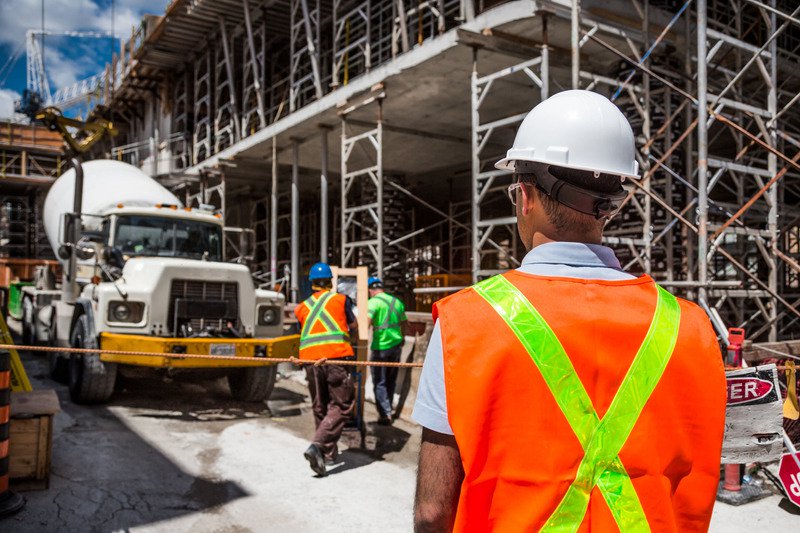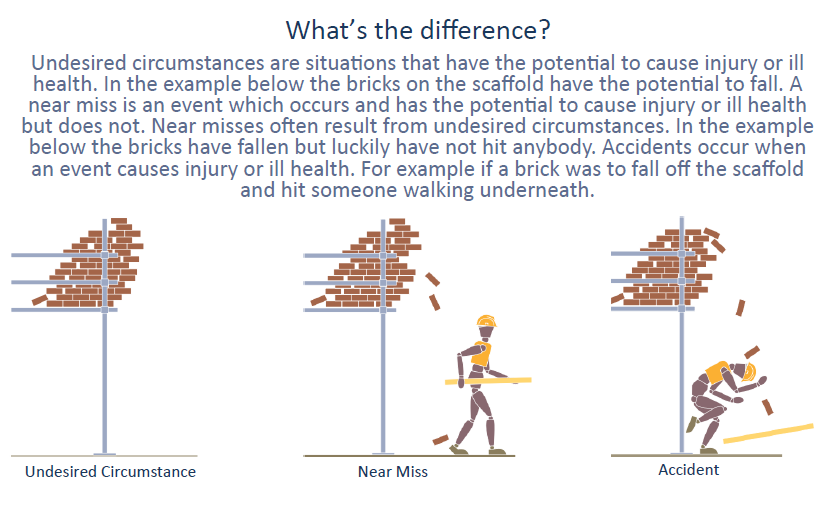What is a Near Miss?
For 2020/21, the HSE reported that 693,000 workers sustained a non-fatal injury and 111 workers were killed at work. With these sorts of statistics, it is a frightening picture to think about all those incidents that although not accidents had the potential to become one of these figures.
When defining what exactly a near miss is, it is helpful to compare to other types of scenarios. The HSE defines types of adverse events as the following:
- accident: an event that results in injury or ill health;
- incidents include:
– near miss: an event that, while not causing harm, has the potential to cause injury or ill health.
– undesired circumstance: a set of conditions or circumstances that
have the potential to cause injury or ill health, eg untrained nurses
handling heavy patients.
Whilst a near miss and undesired circumstance seem similar, there is a difference.
Why Should You Report Near Misses?
Near Misses are most often a result of failings in health and safety management and occur frequently. Although minor, research repeatedly shows that serious incidents are underpinned by an increasing number of less serious incidents which share similar failings (see the graphic on Henrich’s Pyramid). Due to this, recording as many less serious incidents as possible can help to identify potential causes of more serious incidents which can reduce the number of serious accidents occurring, helping to protect your business’ reputation and finances in case of any legal action.
incidents which share similar failings (see the graphic on Henrich’s Pyramid). Due to this, recording as many less serious incidents as possible can help to identify potential causes of more serious incidents which can reduce the number of serious accidents occurring, helping to protect your business’ reputation and finances in case of any legal action.
There are also legal duties associated with incident reporting:
- Reporting and investigating accidents is part of the risk assessment review process of which there are duties imposed under the Management Of Health And Safety At Work Regulations 1999.
- As an employee, you have a general duty under The Health And Safety At Work Act 1974 (HSWA) to take reasonable care of yourself and others who may be affected by your acts or omissions at work. Identifying unsafe conditions and reporting on incidents that occur fall under this bracket.
Lessons Learnt
 Some of the things you can learn from investigating near misses include:
Some of the things you can learn from investigating near misses include:
- An understanding of how and why things went wrong.
- A true snapshot of what really happens and how work is really done. (Workers
may find short cuts to make their work easier or quicker and may ignore rules.
You need to be aware of this.) - Identifying deficiencies in your risk control management, which will enable you
to improve your management of risk in the future and to learn lessons which
will be applicable to other parts of your organisation.
As well as benefiting the business, it can also help you see an improvement in employee morale and attitude towards health and safety. Employees will be more cooperative in implementing new safety precautions if they were involved in the decision and they can see that problems are dealt with.
Want To Learn More?
If you would like to learn more about accident reporting and investigations, we would recommend our Managing Health and Safety (RoSPA Accredited), which describes Manager responsibilities under current legislation, and Health and Safety Site Induction (RoSPA Accredited), which promotes an understanding of hazards, risks and accident prevention. If you need any further convincing, for this month only, we are offering 10% off these courses with the code ‘nearmiss10‘!


